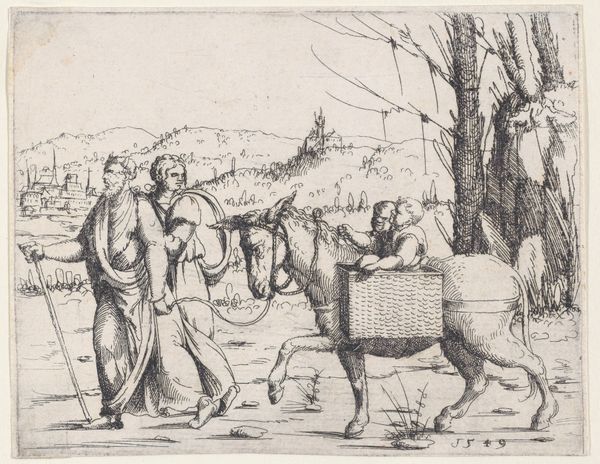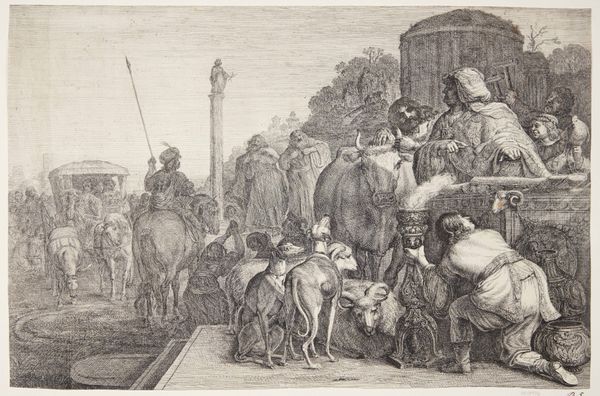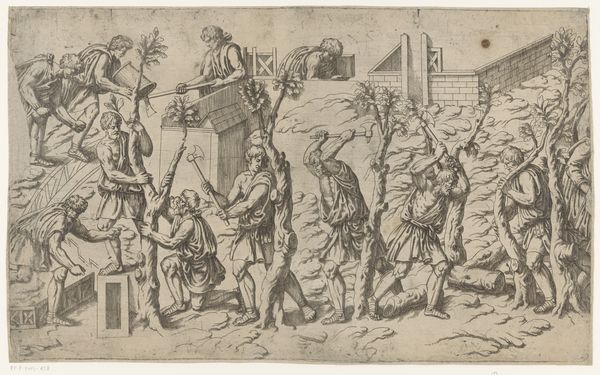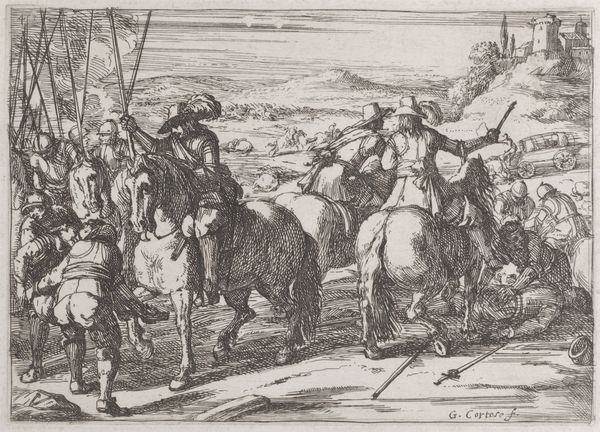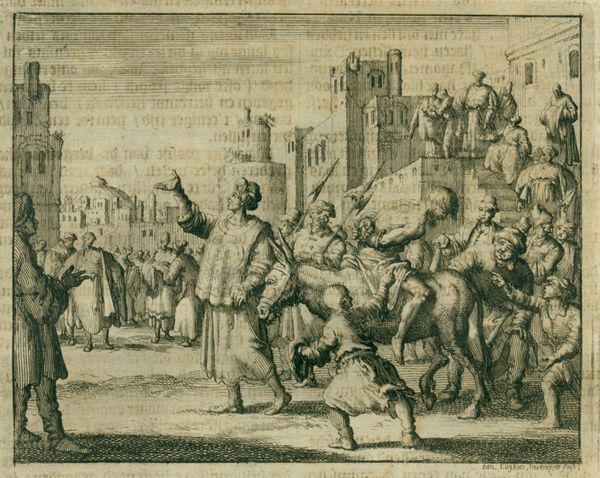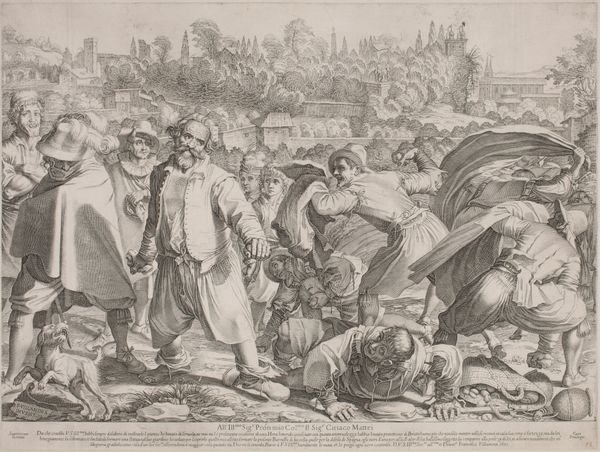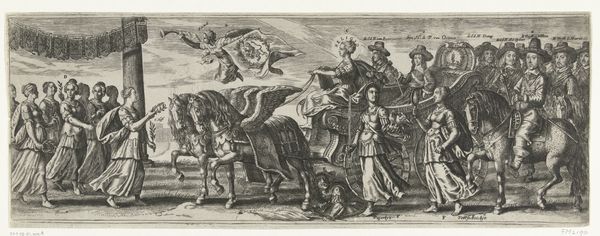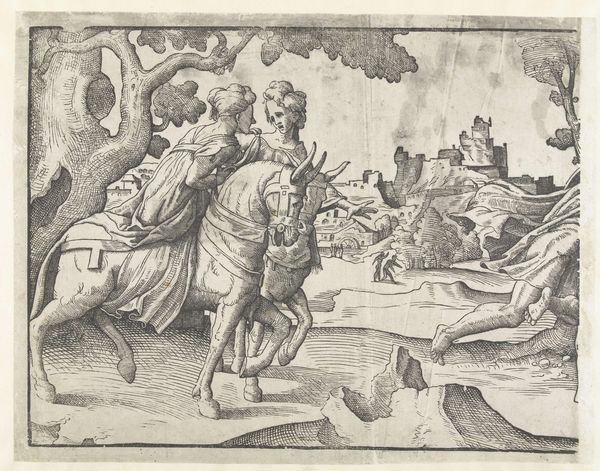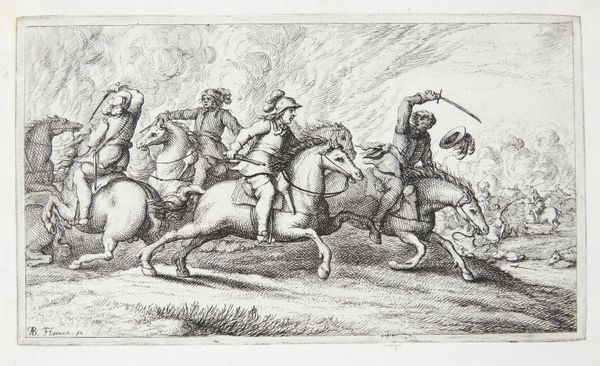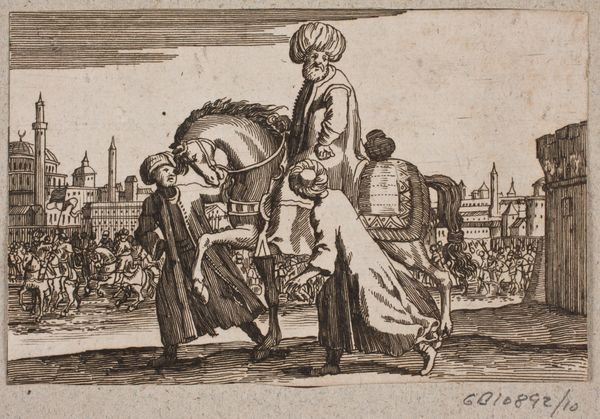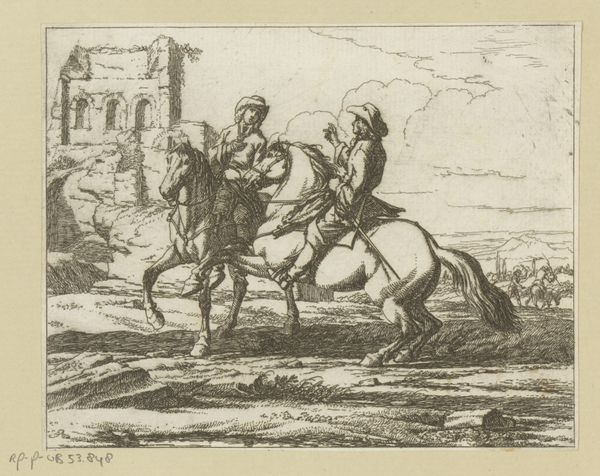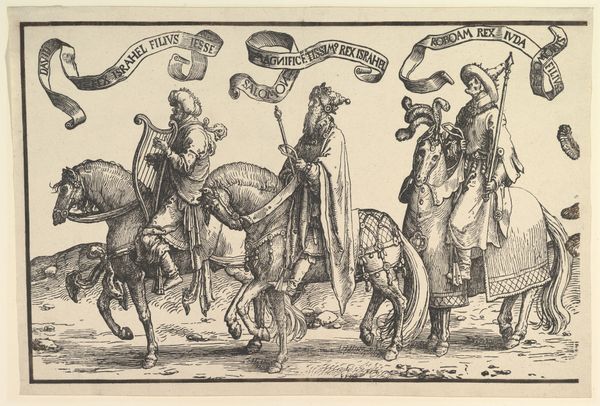
print, engraving
#
baroque
# print
#
landscape
#
islamic-art
#
history-painting
#
engraving
Dimensions: 75 mm (height) x 118 mm (width) (bladmaal)
This small, undated engraving shows a Turkish rider followed by three servants on foot. The conical hats worn by the servants, also known as "hennin," symbolize status and affiliation, harking back to ancient cultures where headwear signified social rank. The horse, a recurring motif throughout art history, embodies power and nobility, its rearing stance evoking dynamic energy. Consider how equestrian statues of Roman emperors, like Marcus Aurelius, served as potent symbols of imperial authority, a tradition echoed in Renaissance art. These symbols, like the horse, are vessels of cultural memory, carrying with them a rich history of power dynamics and social hierarchies. The East has always been a mysterious place, full of exoticism and luxury for the West. The Ottoman Empire was at the peak of its powers and its image inspired awe and dread, engaging viewers on a deep, subconscious level. These recurring motifs are not static; they evolve, resurface, and take on new meanings in different historical contexts, their emotional resonance a testament to our collective cultural memory.
Comments
No comments
Be the first to comment and join the conversation on the ultimate creative platform.
